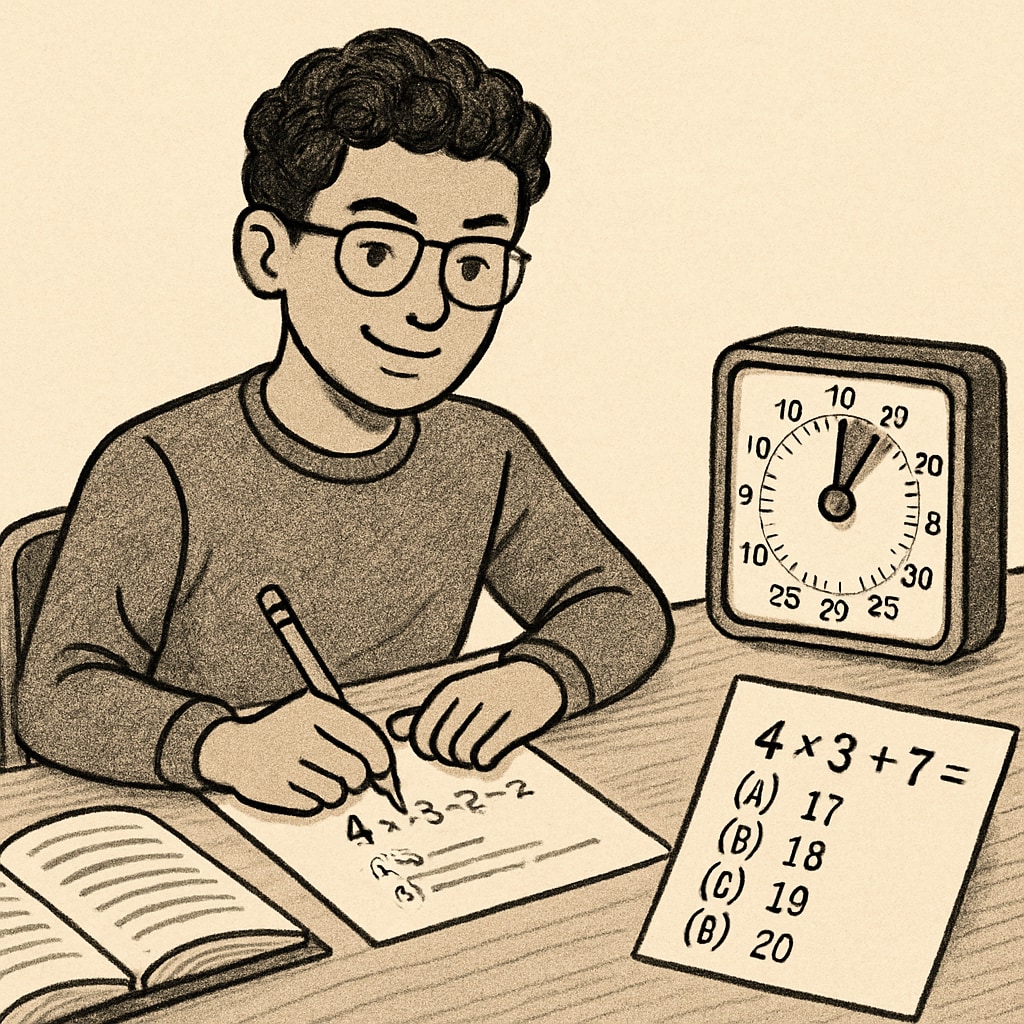Math exam anxiety, especially when tackling multi-choice questions, is a common issue among students, particularly high schoolers. This hidden learning barrier can lead to self-doubt and poor performance. However, with the right mindset and strategies, overcoming this challenge is entirely possible. Let’s explore the psychological roots of this anxiety and practical tactics to transform your fear into mastery.

Understanding the Roots of Math Exam Anxiety
Math anxiety stems from a combination of psychological and situational factors. For example, past failures, societal stereotypes about math being inherently difficult, and the pressure to perform well all contribute to this condition. Multi-choice questions can amplify this stress due to their tricky nature, as multiple correct answers require higher precision and critical thinking.
According to a study conducted by the American Psychological Association, math test anxiety impacts cognitive processing. This means students under pressure may struggle to recall formulas or analyze problems logically. In the case of multi-choice questions, the fear of missing one or more correct options adds an additional layer of complexity.
How Multi-Choice Questions Trigger Pressure
Multi-choice questions in math tests are designed to assess not only knowledge but also decision-making skills. While this format offers the advantage of clues within the options, it can also trap students in overthinking. Common triggers include:
- Fear of partial correctness: Selecting some but not all correct options often results in zero credit.
- Time pressure: The need to evaluate multiple possibilities within limited time increases stress.
- Second-guessing: Students often doubt their initial choices, wasting precious time and increasing anxiety.
Recognizing these triggers is the first step towards developing strategies to manage them.

Practical Strategies to Overcome Math Exam Anxiety
To tackle multi-choice math questions effectively, students need both mental and technical tools. Here are some proven techniques:
1. Reframe Your Thoughts
Negative self-talk like “I’m bad at math” reinforces anxiety. Instead, replace these thoughts with positive affirmations such as “I’m improving every day” or “I can solve this step by step.” Cognitive-behavioral therapy (CBT) techniques suggest that changing your inner dialogue can significantly reduce stress.
2. Break Down the Problem
Rather than viewing the entire question as overwhelming, dissect it into smaller steps. Identify one correct option at a time and eliminate the wrong ones. This method reduces the cognitive load and increases accuracy.
3. Manage Your Time
Allocate a specific amount of time to each question based on its complexity. For instance, if the exam has 20 multi-choice questions in 40 minutes, aim to spend no more than 2 minutes per question initially. This allows extra time for review.
4. Practice Under Simulated Conditions
Regular practice in a timed environment helps familiarize yourself with multi-choice formats. Use practice exams to identify patterns in questions and refine your approach. Resources like standardized test preparation guides can be particularly helpful.
5. Build a Calm Test Routine
Before the exam, engage in relaxation techniques like deep breathing or visualization. Imagine yourself confidently answering each question. Studies from Britannica show that these methods can significantly lower test anxiety.
From Anxiety to Confidence: A Real-Life Case
Meet Sarah, a 17-year-old transfer student who struggled with math exam anxiety after moving to a new school. Multi-choice questions were her biggest hurdle. With guidance from her teacher, Sarah started practicing mindfulness, reframing her negative thoughts, and breaking down problems into manageable steps. Over time, her confidence grew, and she scored in the top 10% on her final exam.
Sarah’s story is proof that overcoming math anxiety is possible with persistence and the right strategies.
Conclusion: Take Control of Your Math Journey
Math exam anxiety, especially in multi-choice sections, doesn’t have to control your performance. By understanding its causes and applying practical solutions like cognitive reframing, time management, and regular practice, you can transform fear into confidence. Remember, it’s not about perfection but progress. With each step, you’ll move closer to mastering your math exams.
Final Tip: Don’t hesitate to seek support from teachers, peers, or mental health professionals if anxiety feels overwhelming. You’re never alone in this journey.


